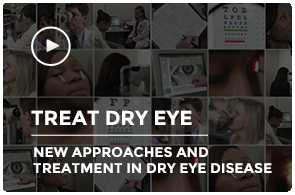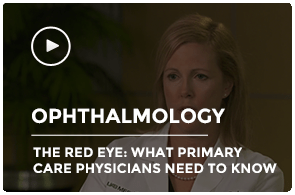The Cornea and External Disease service of the UAB Callahan Eye treats adult and teenage patients with all types of conditions affecting the cornea, conjunctiva, and sclera. A few of the cornea-related conditions we treat and services we provide include:
- Keratoconus: A condition that causes the cornea to become thin and bulge outward like a cone, resulting in blurry and distorted vision. Options for correcting a patient’s vision begin with glasses and continue to standard contact lenses, specialty contact lenses, and corneal transplantation. If the keratoconus is found to be progressing or advancing, patients can be treated with an in-office procedure called corneal cross-linking (CXL).
- Fuchs’ dystrophy (or Fuchs’ corneal dystrophy): A condition that occurs when cells in the corneal layer known as the endothelium deteriorate at a faster rate than occurs with normal aging. This reduces the cornea’s ability to pump water out of the cornea and keep it clear. The water buildup causes the cornea to become cloudy, resulting in hazy or blurred vision.
- Corneal ulcer: An open sore on the cornea that typically results from an eye infection related to a bacteria, virus, fungus, or protozoa. Contact lens wear, dry eye, and allergies are common causes.
- Corneal abrasion and erosion: A corneal abrasion is an injury (such as a scratch, scrape, or cut) to the surface layer of the cornea called the epithelium. It is frequently caused by fingernail scratches, makeup brushes, contact with tree limbs or bushes, or rubbing the eye. If the abrasion does not fully heal, corneal erosion may develop and cause a sensation similar to having sand or a hair in the eye.
- Conjunctivitis (pink eye): A condition caused by inflammation or infection of the conjunctiva, the clear tissue that lines the eyelid and covers the white part of the eyeball. When small blood vessels in the conjunctiva are irritated, they become more visible, giving the eye a pinkish tint.
- Herpes simplex and herpes zoster keratitis: The herpes simplex virus (HSV) commonly affects the face in the form of a “cold sore” or “fever blister” but may spread to the cornea, causing infection, scarring, and blurred vision. Likewise, the herpes zoster virus, commonly known as shingles, can affect the cornea and also cause infection, scarring, and blurred vision. The eye is the second most common location for shingles to develop.
- Pterygium: A growth that starts on the white tissue of the eye but begins to spread to the cornea. These growths usually are shaped like a wedge or triangle and most frequently occur in people who spend a lot of time in the sun or work in dry, dusty environments.
- Ocular surface disease: A group of conditions that can range from minor irritation and dry eye to more severe conditions such as atopic or allergic keratoconjunctivitis, ocular cicatricial pemphigoid (OCP), or Stevens-Johnson syndrome. Our specialists have extensive experience diagnosing and treating the most advanced and complex ocular surface conditions.
- Corneal transplant: We offer the full spectrum of cornea transplant options for patients with Fuchs’ dystrophy, keratoconus, corneal scarring, and cornea-related vision problems that are not correctable with contact lenses. The options in cornea transplant are continually evolving.
- Cataract surgery: From standard to customized cataract surgery, we offer the full range of cataract surgery options including presbyopia (bifocal)-correcting intraocular lenses (IOLs), astigmatism correction, laser-assisted cataract surgery, monovision, and aspheric pseudophakic-accommodation. If the patient desires, we can enhance vision and reduce his/her dependence on glasses or contact lenses.
- Contact lenses: Our doctors specialize in all types of contact lens styles including soft, toric, hybrid, and gas permeable. Certain patients with corneal scarring, herpes simplex, herpes zoster, and those who have been told they cannot be fitted for contacts may benefit from customized gas permeable scleral lenses such as the BostonSight SCLERAL brand offered at Callahan.
UAB Callahan Eye is the only full-service facility in Alabama specializing in the diagnosis and treatment of the eye and one of only a few hospitals worldwide devoted to advancements in ophthalmology. Our specialists utilize the most advanced technology and work together to treat the full range of both common and complex cornea conditions. Patients come here from around the world and nation because we don’t just treat eye disease – we empower patients to take control of their eye health.
We are home to more than two dozen ophthalmologists, many of whom are named among the top doctors in their fields nationally. UAB Callahan Eye is widely recognized for excellence in patient care, having consistently earned prestigious awards from health care consulting group Press Ganey, and in 2017 Callahan was named as one of the “100 Great Places to Work in Healthcare” by Becker’s Hospital Review.
Callahan also is known for pioneering developments in surgical instruments, devices, and procedures used by ophthalmologists around the globe. As part of the UAB Medicine academic medical center, Callahan is actively involved in ongoing research and clinical trials. Many of our ophthalmologists have received funding from major research organizations and institutions and collaborate in clinical care to bring the latest in scientific discovery to our patients.
Videos
Resources
Related Specialties
- Conjunctivitis
- Contact Lenses
- Corneal Cross-Linking (CXL)
- Corneal Transplant
- Laser Cataract Surgery
- Temporary Keratoprothesis with Vitrectomy
Clinical Trials
Speak to your physician about your options and browse the link below for more information
Latest News
View All News-
Two UAB inventors named National Academy of Inventors fellows
December 11, 2024
-
Blazer Bridge Fund continues encouraging innovative discoveries; announces 2024 winners
September 20, 2024
-
Keep the fireworks fun in the sky and out of your eyes
June 28, 2024
-
Too much screen time is a risk to children’s eyes. Here is how to protect their eye health.
May 20, 2024
-
ALG6 acts as a modifier gene in the inherited genetic eye disease retinitis pigmentosa 59
March 20, 2024





